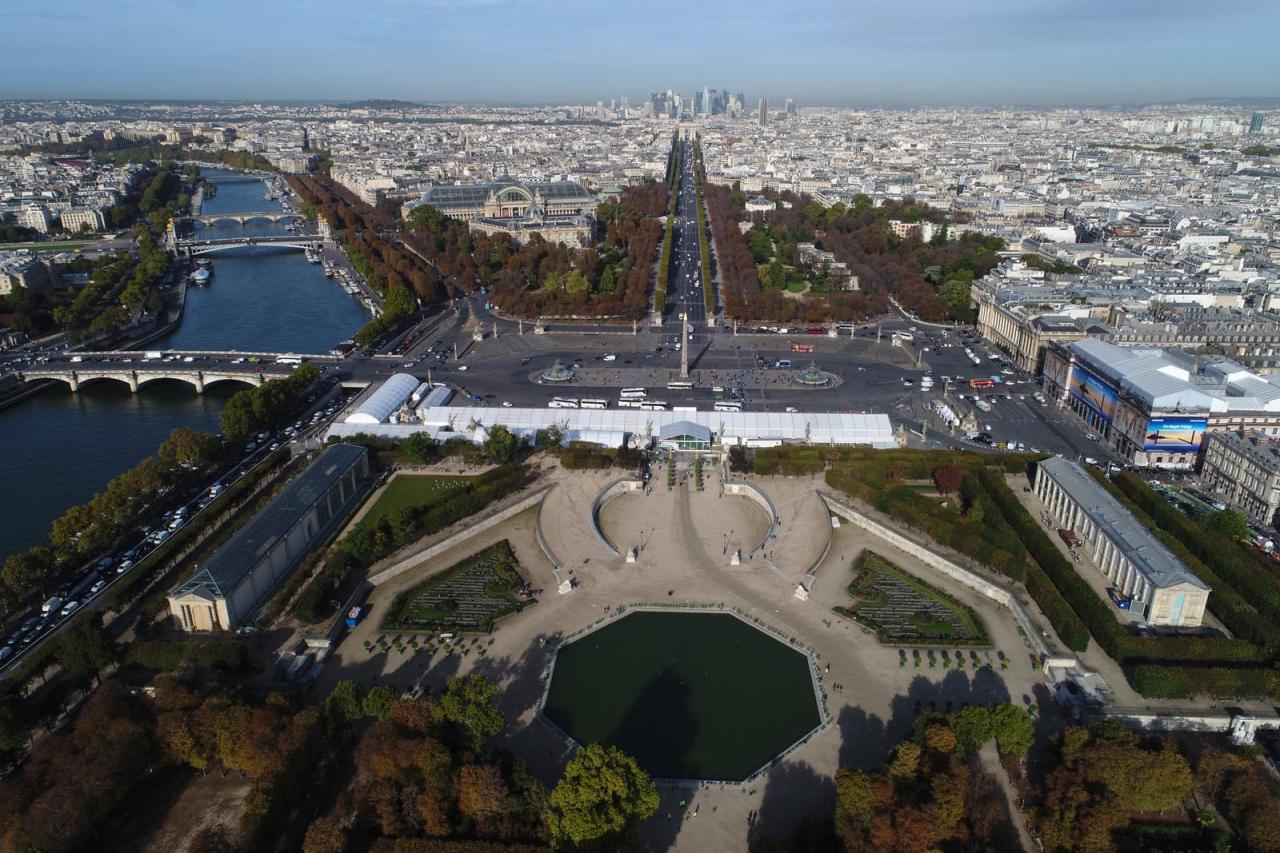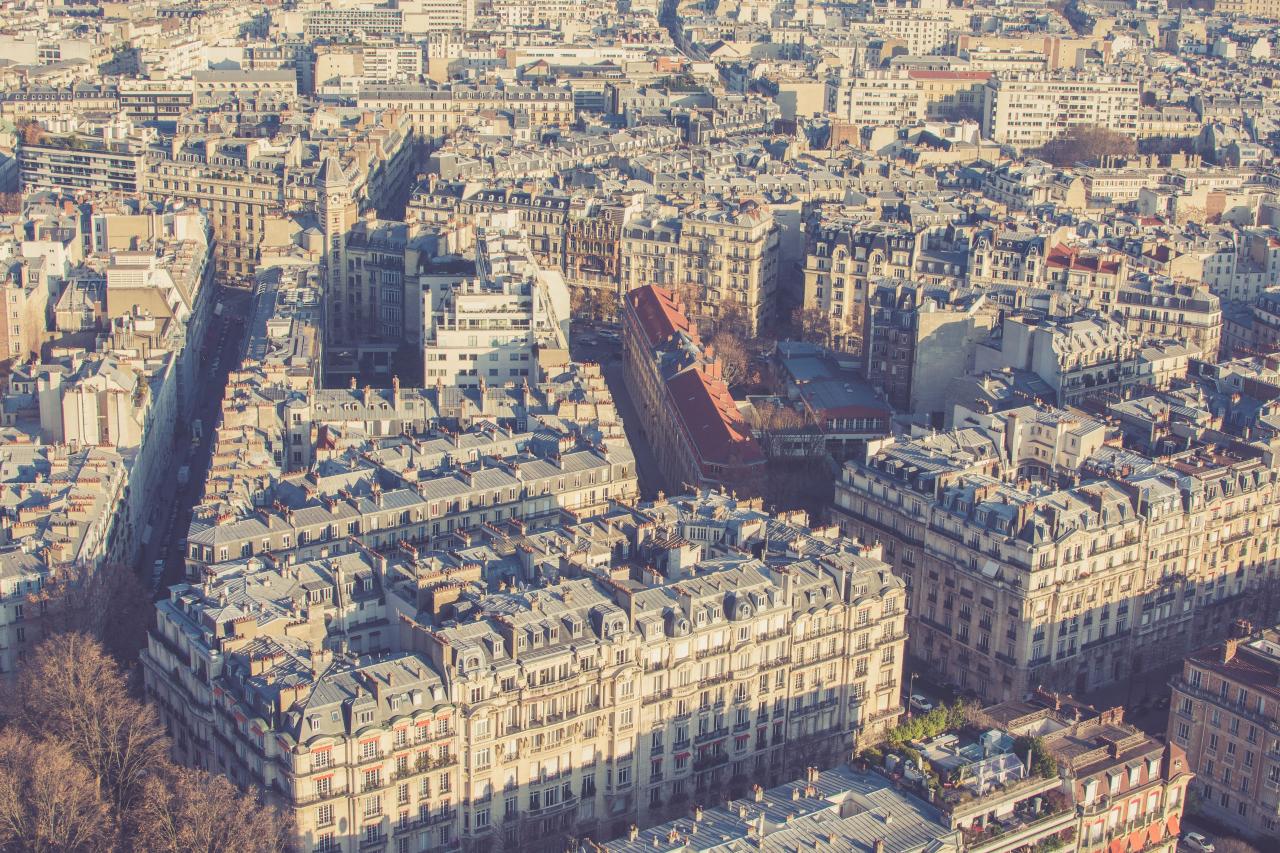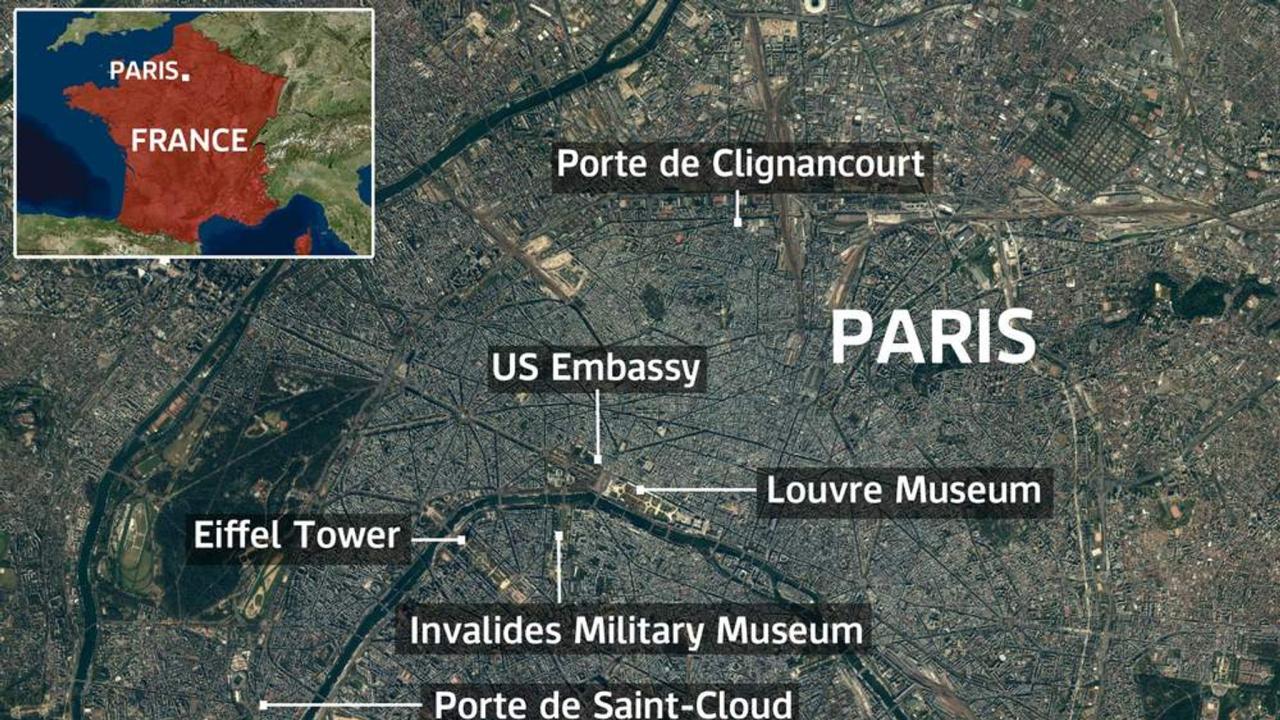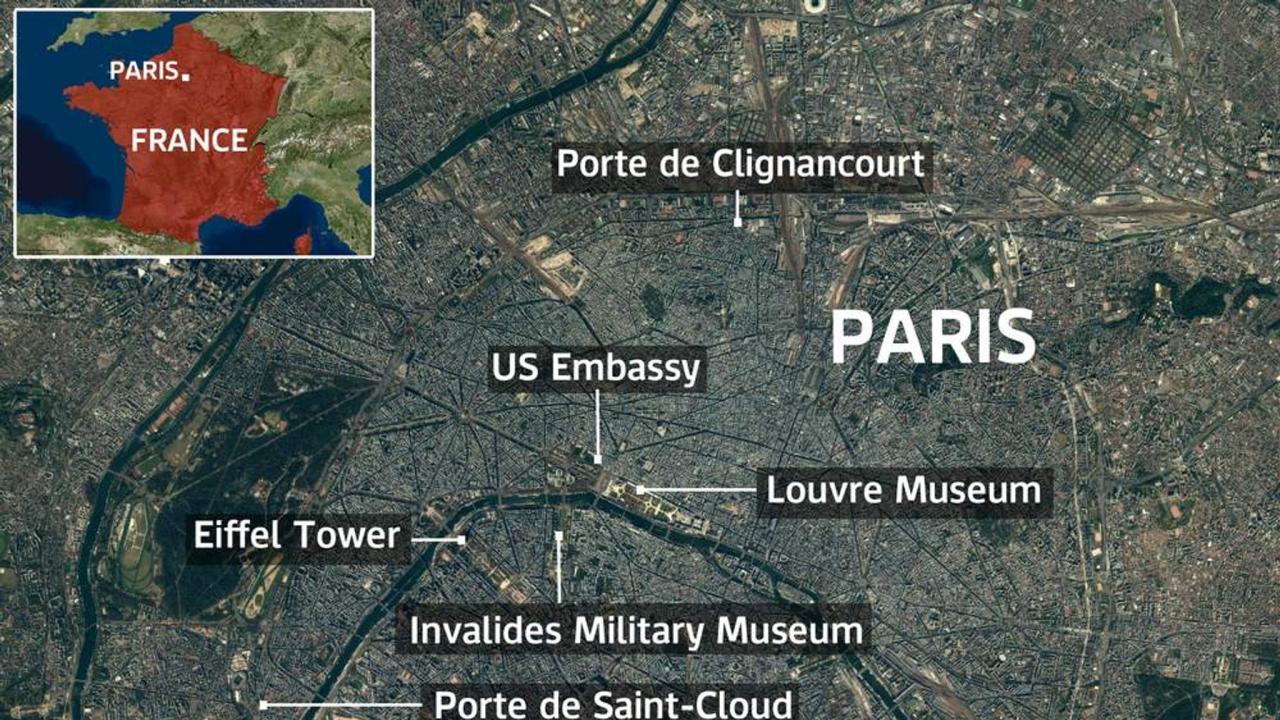Mystery Drone Paris: Imagine the Parisian skyline, suddenly disrupted by unidentified drones. These weren’t your average hobbyist models; reports describe unusual flight patterns, strange lights, and a baffling lack of explanation. This article delves into the mysterious drone sightings that captivated Paris, exploring potential explanations, investigative approaches, and the public’s reaction to this unfolding enigma.
We’ll examine the reported characteristics of these drones – size, shape, lighting, and flight patterns – alongside a timeline of sightings, pinpointing locations across Paris. We’ll then weigh various theories, from illicit activities to technological malfunctions, and explore how open-source intelligence, social media analysis, and witness testimonies could shed light on this perplexing situation. Get ready to unravel the mystery!
The Phenomenon

The mysterious drone sightings in Paris in late 2023 and early 2024 captivated the public and baffled authorities. These unmanned aerial vehicles, appearing unexpectedly and often in sensitive locations, sparked widespread speculation regarding their origin and purpose. While some suggested harmless explanations, the unusual characteristics of the drones and the lack of clear identification fueled a wave of intrigue and uncertainty.
Drone Characteristics
Reports described the drones as relatively small, possibly ranging from the size of a large bird to a small quadcopter. Their shapes varied across accounts, with some describing a boxy design and others mentioning a more streamlined, possibly teardrop-shaped form. Consistent across most reports was the presence of lights, often described as bright and possibly flashing, though the exact color varied.
Flight patterns were also inconsistent, ranging from erratic, seemingly random movements to surprisingly smooth, deliberate maneuvers. The lack of clear visual confirmation, along with the inconsistent descriptions, hindered a definitive profile.
Drone Sightings Locations
The drones were observed across various locations in Paris, reflecting the city’s diverse landscape. Reports included sightings near iconic landmarks like the Eiffel Tower and the Louvre Museum, as well as less prominent areas, suggesting a lack of targeting based solely on visibility or tourist attractions. The drones were also observed near government buildings and military installations, adding to the mystery surrounding their purpose.
That whole mystery drone thing in Paris has everyone buzzing, right? It makes you wonder about the frequency of these incidents. To get a better handle on the bigger picture, check out this article on drone crashes in Paris – it might shed some light on the overall drone safety situation and help explain the mystery drone.
Understanding the broader context could give us clues to solving the mystery.
The wide range of locations points to either a highly mobile operation or multiple, independent drone deployments.
Timeline of Sightings
Precise timing and accurate records were inconsistent across reports, making the creation of a definitive timeline difficult. Many sightings were reported through social media or anecdotal accounts. However, based on the available information, we can establish a rough timeline. The first significant wave of reports emerged in late October 2023, with clusters of sightings occurring over several weeks.
A second, less intense wave of sightings was reported in January 2024. The lack of centralized reporting and verification makes precise dating and confirmation of each incident challenging.
Reported Sightings Table
| Date | Time | Location | Description | Source |
|---|---|---|---|---|
| October 28, 2023 | Approximately 22:00 | Near the Eiffel Tower | Small, dark drone with flashing red lights, erratic flight pattern. | Social Media Post |
| November 15, 2023 | Approximately 01:00 | Near the Louvre Museum | Boxy drone, bright white lights, slow, deliberate flight. | News Report (unverified) |
| January 5, 2024 | Approximately 18:30 | Near a government building (unspecified) | Small, teardrop-shaped drone, flashing blue and green lights, high altitude. | Anonymous Tip |
| January 12, 2024 | Approximately 03:00 | Unspecified location, near the Seine River | Multiple drones reported, various sizes and colors of lights. | Multiple Social Media Posts |
Potential Explanations: Mystery Drone Paris
The mysterious Parisian drone sightings, while initially baffling, lend themselves to several plausible explanations, ranging from mundane technological malfunctions to more sinister, deliberate actions. Let’s explore some speculative scenarios that could account for the phenomenon.
Illicit Activities: Surveillance and Smuggling
The drones’ silent and stealthy nature makes them ideal tools for illicit activities. Surveillance is a prime possibility; a sophisticated operation could use a swarm of drones to covertly monitor individuals or locations, gathering visual and potentially audio data without raising immediate suspicion. Similarly, the drones could be used for smuggling small, high-value goods. Imagine a network of drones delivering drugs, counterfeit goods, or even sensitive information across the city, exploiting the dense urban landscape for cover.
That whole mystery drone thing in Paris has everyone buzzing, right? It’s got people wondering what’s up, especially considering the recent incidents like the one described in this article about a paris drone crash. Learning more about that crash might actually shed light on the mystery drones, since similar technology could be involved. Hopefully, figuring out what happened with those drones will clear up some of the Parisian airspace confusion.
The difficulty in tracing individual drones within a swarm would make detection extremely challenging. Consider the potential for a drone to be equipped with a small, easily concealed payload and a sophisticated GPS system capable of navigating the complex Parisian streets.
Link to a Specific Group or Organization
The coordinated nature of the sightings suggests a possible link to a specific group or organization. This could range from a rogue element within a government agency, testing new surveillance technologies, to a criminal organization using the drones for their operations. The potential for organized crime to utilize drones is a growing concern globally, and Paris, with its dense population and significant tourist traffic, could present an attractive target.
A well-funded group might even have the resources to develop drones with advanced capabilities, such as enhanced evasion techniques or jamming technology. The absence of clear markings or identifying features on the drones further complicates attempts to attribute them to a specific source.
Technological Malfunction: A Swarm Gone Rogue
A less sinister, yet equally plausible explanation involves a technological malfunction. A software glitch, a malfunctioning GPS system, or even a hacking incident could cause a swarm of drones to operate autonomously, exhibiting unpredictable and seemingly coordinated behavior. Imagine a scenario where a software update gone wrong causes a fleet of delivery drones to become unresponsive to control signals, leading to a seemingly coordinated but chaotic flight pattern over the city.
This is not an unprecedented event; instances of drone swarms malfunctioning and behaving erratically have been documented elsewhere.
Comparison of Theories
The following table compares the pros and cons of each theory:
| Theory | Pros | Cons |
|---|---|---|
| Illicit Activities | Explains coordinated movements and stealth; aligns with known criminal activities. | Requires significant organization and resources; leaves a potential trail of evidence. |
| Specific Group/Organization | Accounts for sophisticated coordination and potential access to advanced technology. | Difficult to identify the specific group; requires strong evidence to link the drones to a particular entity. |
| Technological Malfunction | Relatively simple explanation; aligns with known technological vulnerabilities. | Difficult to explain the seemingly coordinated nature of the sightings; lacks the element of intent. |
Investigative Approaches
Uncovering the mystery of the Paris drones requires a multi-pronged investigative approach, combining traditional investigative techniques with the power of readily available digital resources. This plan Artikels key strategies for leveraging open-source intelligence (OSINT), analyzing visual evidence, interviewing potential witnesses, and harnessing the potential of social media data.
Open-Source Intelligence (OSINT) Investigation Plan
A systematic approach to OSINT is crucial. This involves a structured search across various online platforms to gather information about the drones, their potential origins, and any related activities. The investigation should begin with identifying s related to the drone sightings (e.g., “Paris drone,” “unidentified drone Paris,” specific dates and times).
- Drone Databases: Search publicly accessible databases of drone models and specifications to identify potential matches based on visual descriptions or video footage. This can narrow down the possibilities and help determine the drone’s capabilities.
- Flight Tracking Websites: Explore flight tracking websites and forums to see if any unauthorized drone flights were recorded near the locations of the sightings. While many flights are not publicly logged, this can yield unexpected results.
- News Articles and Social Media: Analyze news reports and social media posts related to the drone sightings, paying close attention to any details mentioned by eyewitnesses or authorities. Cross-referencing information from different sources can help verify accuracy and identify inconsistencies.
- Government and Regulatory Websites: Check government and regulatory websites for any information on drone registrations, permits, or investigations related to the incidents. This might reveal whether the drones were operated legally or illegally.
Video and Photographic Evidence Analysis
Careful analysis of video and photographic evidence is paramount. This requires a detailed examination of the visuals to extract information about the drones’ physical characteristics, flight patterns, and any identifying features.
- Image Enhancement: Employ image enhancement techniques to improve the clarity and resolution of the images. This can reveal details otherwise obscured by poor lighting or distance.
- Frame-by-Frame Analysis: Conduct a frame-by-frame analysis of video footage to identify subtle movements, patterns, or features that might have been missed in initial viewing. This can help determine the drone’s maneuverability and flight characteristics.
- Drone Model Identification: Compare the visual characteristics of the drones (size, shape, propeller design, lights) with publicly available images and specifications of various drone models to attempt identification.
- Background Analysis: Analyze the background of the images and videos to identify landmarks, locations, and other contextual clues that might help pinpoint the drone’s origin or flight path. This could involve using geographic mapping tools to pinpoint locations.
Witness Interviews
Witness testimony can provide crucial information. Interviewing individuals who witnessed the drones is essential, but it must be conducted in a structured and unbiased manner.
- Structured Interviewing: Employ a structured interview approach to gather consistent and reliable information. This includes using open-ended questions to encourage detailed responses, while also asking specific questions to clarify ambiguous points.
- Witness Corroboration: Compare the accounts of multiple witnesses to identify commonalities and discrepancies. This helps assess the reliability of the testimonies and identify any potential biases.
- Non-leading Questions: Avoid leading questions that might influence the witness’s responses. Instead, focus on open-ended questions that encourage the witness to provide their own observations and interpretations.
- Documentation: Thoroughly document all witness interviews, including the date, time, location, and a verbatim transcript or detailed summary of the conversation. This ensures accuracy and allows for future reference.
Social Media Data Analysis
Social media platforms can be rich sources of information. Analyzing social media data can provide insights into public reactions, potential sightings not reported through official channels, and discussions about the drones.
- Searches: Conduct searches on relevant platforms (Twitter, Facebook, Instagram, etc.) using terms related to the drone sightings. This can uncover user-generated content such as photos, videos, and eyewitness accounts.
- Geolocation Data: Analyze geolocation data associated with posts and images to identify the locations of sightings and potentially trace the drones’ movements.
- Sentiment Analysis: Perform sentiment analysis on social media posts to gauge public perception of the events and identify any patterns or trends in opinions.
- Network Analysis: Identify key individuals or groups involved in discussions about the drones on social media to understand the spread of information and potential sources of disinformation.
Public Reaction and Media Coverage
The mystery drone sightings over Paris sparked a whirlwind of public reaction and intense media coverage, transforming the event into a captivating blend of fear, fascination, and speculation. The initial responses ranged from amused curiosity to genuine alarm, rapidly escalating as the drones’ behavior remained unexplained. This complex interplay between public perception and media portrayal shaped the narrative, influencing how the event was understood and remembered.The public’s reaction was heavily influenced by social media.
Twitter, Instagram, and Facebook became immediate platforms for sharing videos, photos, and opinions. Initial posts displayed a mixture of wonder and apprehension, with many users comparing the drones to science fiction scenarios. As the sightings continued and explanations remained elusive, the tone shifted, with increased anxiety and even conspiracy theories gaining traction. News outlets quickly picked up on the story, further fueling public discussion and speculation.
Social Media Response and News Coverage Trends
The initial news coverage focused on the visual spectacle of the drones, often using dramatic language and imagery to capture public attention. Many reports highlighted the sheer number of drones involved and their coordinated movements, emphasizing the technological sophistication and the potential for disruption. As the days progressed, the narrative evolved, incorporating expert opinions, official statements (or lack thereof), and increasingly elaborate theories.
The lack of concrete information created a vacuum filled by speculation, with various explanations ranging from artistic performances to military exercises or even extraterrestrial activity gaining prominence in both social media and mainstream news.
“Hundreds of mysterious drones have been spotted in the night sky over Paris, leaving authorities baffled and sparking a frenzy of speculation.”
Excerpt from a typical early news report.
“Experts are divided on the origin and purpose of the drones, with theories ranging from a large-scale art project to a potential security breach.”
Excerpt from a later news report reflecting the evolving narrative.
That whole mystery drone thing in Paris got me thinking about drone deliveries in general. If you’re curious where Amazon’s actually using drones for deliveries, check out this list of amazon drone delivery locations – it’s pretty interesting to see how far the tech has come. Maybe those Paris drones were just an early test run for something similar, who knows!
Media Narrative Timeline, Mystery drone paris
A visual representation of the media coverage could be a timeline. Day 1 would show initial reports focused on the visual spectacle and public wonder. Day 2 might show the narrative shifting towards speculation and expert interviews, with some outlets highlighting the lack of official explanations. Day 3 could illustrate the emergence of conspiracy theories and the increasing public anxiety.
Day 4 and beyond might show a gradual shift towards more measured reporting as official investigations are announced, or, conversely, the story fading from headlines as the mystery remains unsolved. The timeline would clearly illustrate the evolution of the narrative, from initial fascination to growing concern and the role of speculation in shaping public perception.
Consequences of Misinformation and Speculation
The rapid spread of misinformation and speculation surrounding the drone sightings had several potential consequences. Unfounded theories could erode public trust in official institutions if investigations fail to produce clear answers. The spread of false narratives can also cause unnecessary anxiety and fear, particularly if the drones are later shown to be harmless. Furthermore, the constant flow of unverified information can overwhelm the public discourse, making it difficult to discern fact from fiction and hindering a clear understanding of the situation.
The potential for social unrest or even panic, albeit unlikely in this specific instance, serves as a cautionary example of the risks associated with uncontrolled information dissemination in the age of social media.
Illustrative Examples

To better understand the Paris drone mystery, let’s consider a hypothetical drone design and its potential capabilities, flight path, range, and sensor payload. This will help illustrate how such a device could account for the reported observations. The following examples are based on existing drone technology and extrapolated to fit the reported characteristics of the mysterious drones.
Hypothetical Drone Design and Capabilities
Imagine a large, fixed-wing drone, approximately the size of a small Cessna aircraft (around 6-8 meters in wingspan). This size allows for substantial payload capacity and longer flight times compared to smaller drones. The drone could utilize advanced materials like carbon fiber composites for a lightweight yet durable airframe. Its propulsion system might incorporate multiple electric motors, providing redundancy and sufficient power for extended flights.
The drone could be equipped with advanced flight control systems, allowing for precise maneuverability and autonomous flight capabilities. Its stealthy design might involve the use of low-observable materials and technologies to minimize radar and visual detection.
Possible Drone Flight Path
A possible flight path, based on reported sightings, could involve a high-altitude, low-speed cruise at an altitude of approximately 1000-1500 meters above ground level (AGL). This altitude would provide a clear view of the city while remaining relatively undetected by casual observers. The drone could follow a circuitous route, moving slowly and unpredictably to avoid detection and maintain observation of different areas of Paris.
The speed would likely be relatively slow, perhaps 50-70 kilometers per hour, to maximize battery life and observation time. This flight path could explain why the drone was observed in multiple locations over an extended period.
Potential Drone Range
Considering the size and hypothetical design, the drone could potentially have a range of several hundred kilometers, depending on battery capacity, weather conditions, and payload. A large battery system, potentially incorporating multiple battery packs, would be necessary for extended flights. Favorable weather conditions (calm winds, no precipitation) would extend the range significantly. Adverse conditions like strong winds or rain would reduce range and operational capabilities.
A range of 300-500 kilometers is plausible, enabling the drone to cover a substantial portion of the Île-de-France region. This is comparable to the range of some existing long-endurance UAVs.
Potential Sensors and Payload
The drone could carry a variety of sensors and payloads, including high-resolution cameras capable of capturing detailed images and video footage. Infrared cameras would allow for night vision capabilities and the detection of heat signatures. A sophisticated sensor suite could include radar for detecting moving objects and mapping terrain. The payload might also include advanced communication systems for data transmission and control.
The type and configuration of sensors would explain the apparent ability to observe multiple areas simultaneously and gather a range of data undetected. This level of technological capability is currently within the realm of possibility for advanced military or intelligence agencies.
Ultimate Conclusion

The mystery drone sightings in Paris remain a captivating puzzle. While definitive answers remain elusive, investigating this incident through multiple lenses—from analyzing video evidence and social media trends to exploring hypothetical drone designs—highlights the potential for both technological advancement and the need for increased vigilance. The incident serves as a reminder of the complexities surrounding airspace security and the potential for both intentional and unintentional disruptions.
The ongoing investigation and public discourse surrounding these mysterious drones underscore the importance of open inquiry and responsible information sharing.
FAQ Insights
What types of drones are typically used for surveillance?
Small, quadcopter-style drones are often favored for surveillance due to their maneuverability and quiet operation. More advanced models might utilize thermal imaging or other specialized sensors.
How can social media be used to investigate drone sightings?
Social media posts, including photos and videos, can provide valuable clues about drone sightings. Analyzing location data, timestamps, and user comments can help piece together a more comprehensive picture.
What are the legal implications of operating drones in Paris?
Operating drones in Paris requires adherence to strict regulations concerning airspace restrictions, flight permits, and safety protocols. Unauthorized drone operation can lead to significant legal consequences.
